Toyota Corolla (E210) 2019-2025 Owners Manual / Maintenance and care / Checking and replacing fuses
Toyota Corolla (E210): Checking and replacing fuses
If any of the electrical components do not operate, a fuse may have blown. If this happens, check and replace the fuses as necessary.
Checking and replacing fuses
1. Turn the engine switch off.
2. Open the fuse box cover.
Engine compartment: type A fuse box
Push the tabs in and lift the lid off.
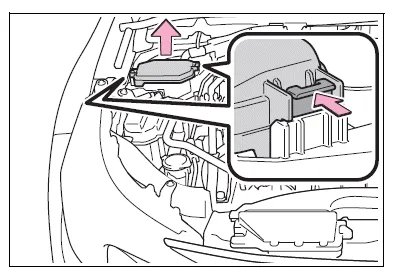
Engine compartment: type B fuse box
Push the tabs in and lift the lid off.
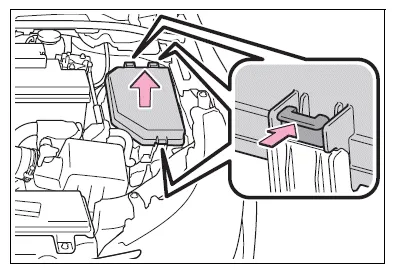
Under the driver's side instrument panel
Remove the lid.
Make sure to push the claw when removing/installing the lid.
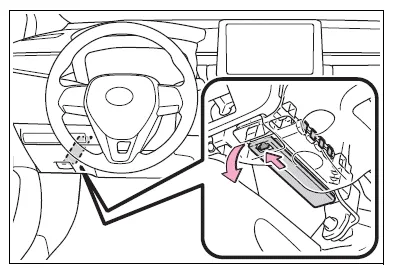
3. Remove the fuse with the pullout tool.
Only type A fuse can be removed using the pullout tool.
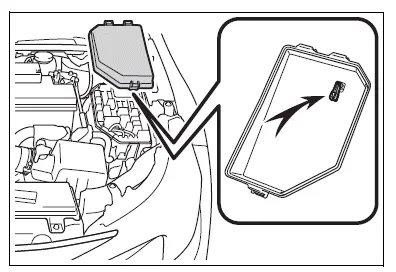
4. Check if the fuse is blown.
Replace the blown fuse with a new fuse of an appropriate amperage rating. The amperage rating can be found on the fuse box lid.
Type A
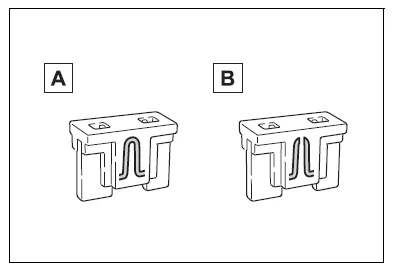
- Normal fuse
- Blown fuse
Type B
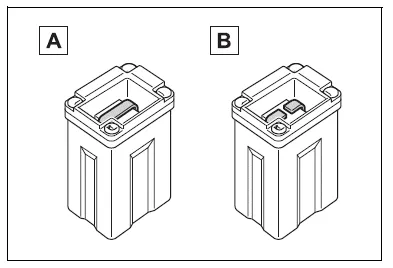
- Normal fuse
- Blown fuse
Type C
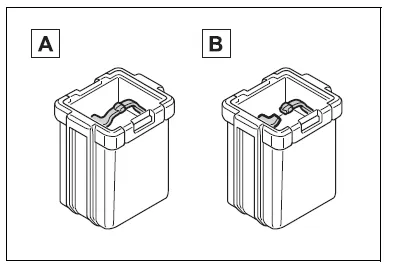
- Normal fuse
- Blown fuse
Type D
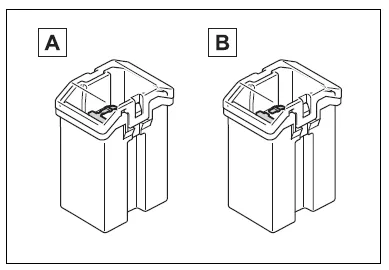
- Normal fuse
- Blown fuse
Type E
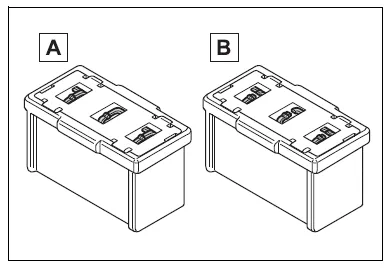
- Normal fuse
- Blown fuse
■After a fuse is replaced
- When installing the lid, make sure that the tab is installed securely.
- If the lights do not turn on even after the fuse has been replaced, a bulb may need replacement.
- If the replaced fuse blows again, have the vehicle inspected by your Toyota dealer.
■If there is an overload in a circuit
The fuses are designed to blow, protecting the wiring harness from damage.
■When replacing light bulbs
Toyota recommends that you use genuine Toyota products designed for this vehicle.
Because certain bulbs are connected to circuits designed to prevent overload, non-genuine parts or parts not designed for this vehicle may be unusable.
WARNING
■To prevent system breakdowns and vehicle fire
Observe the following precautions.
Failure to do so may cause damage to the vehicle, and possibly a fire or injury.
- Never use a fuse of a higher amperage rating than that indicated, or use any other object in place of a fuse.
- Always use a genuine Toyota
fuse or equivalent.
Never replace a fuse with a wire, even as a temporary fix.
- Do not modify the fuses or fuse boxes.
NOTICE
■Before replacing fuses
Have the cause of electrical overload determined and repaired by your Toyota dealer as soon as possible.
Other materials:
Problem symptoms table
When the malfunction code is not confirmed in the diagnostic trouble code
check and the problem still can
not be confirmed in the basic inspection, proceed to this problem symptoms
tables and troubleshoot according
to the numbered order given below.
*: A/t only ...
Front suspension
Preparation
Sst
Recomended tools
Equipment
...
Tire & wheel
Wheel and tire system
Inspection
1. Inspect tire
check the tires for wear and proper inflation pressure.
Cold tire inflation pressure:
Using a dial indicator, check the tire runout.
Tire runout: 3.0 Mm (0.118 In.) Or less
2. Rotate tire
Hint:
see the illustration ...


